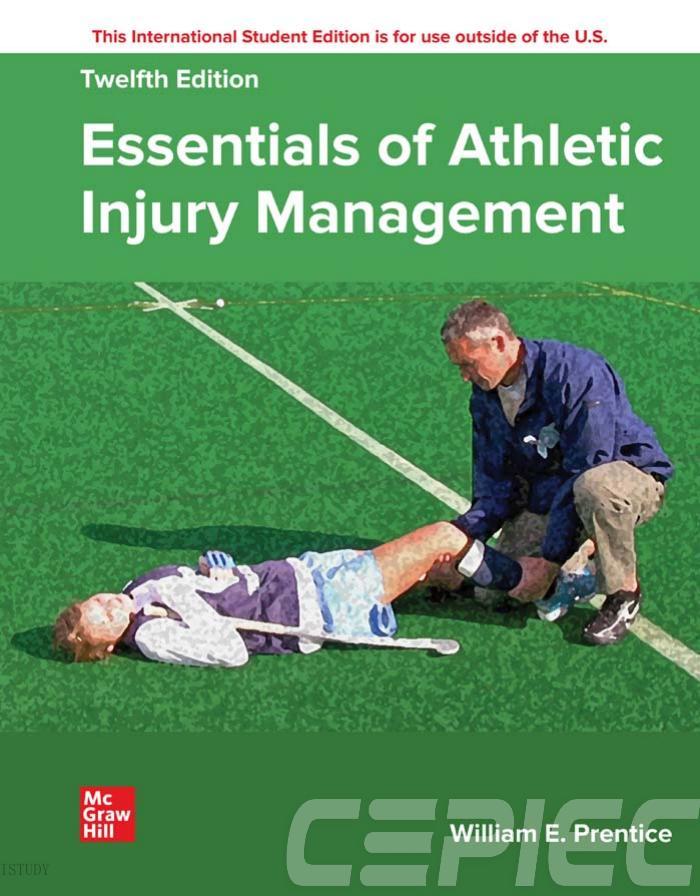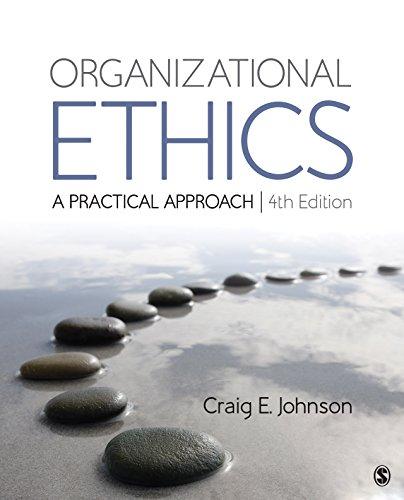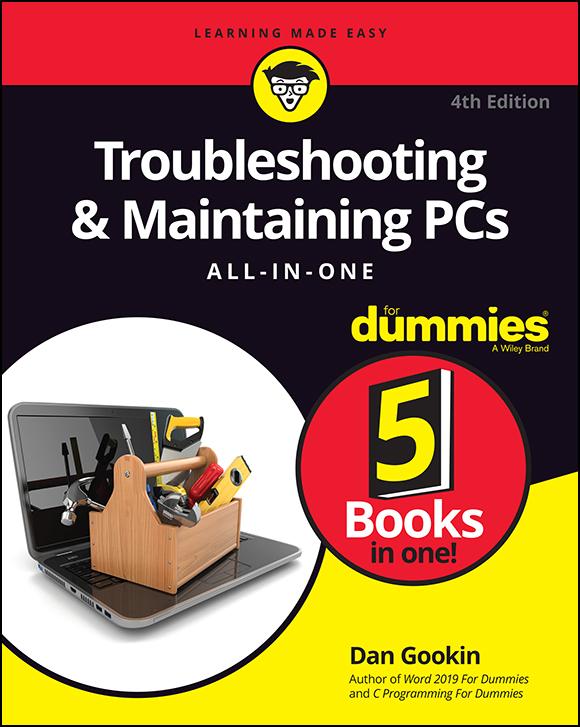TroubleshootingandMaintainingPCsAll-in-OneFor Dummies4thEditionDanGookin

https://ebookmass.com/product/troubleshooting-andmaintaining-pcs-all-in-one-for-dummies-4th-edition-dan-

Instant digital products (PDF, ePub, MOBI) ready for you
Download now and discover formats that fit your needs...
Android For Dummies 2nd Edition Dan Gookin
https://ebookmass.com/product/android-for-dummies-2nd-edition-dangookin/
ebookmass.com
C Programming For Dummies 2nd Edition Dan Gookin
https://ebookmass.com/product/c-programming-for-dummies-2nd-editiondan-gookin/
ebookmass.com
Word For Dummies (For Dummies (Computer/Tech)) 1st Edition
Dan Gookin
https://ebookmass.com/product/word-for-dummies-for-dummies-computertech-1st-edition-dan-gookin/
ebookmass.com
Calculus Concepts and Contexts - 5th Edition James Stewart



https://ebookmass.com/product/calculus-concepts-and-contexts-5thedition-james-stewart/
ebookmass.com

The Representation of Workers in the Digital Era Raquel Rego
https://ebookmass.com/product/the-representation-of-workers-in-thedigital-era-raquel-rego/
ebookmass.com
QuickBooks 2016 : the best guide for small business 2nd Edition Capachietti
https://ebookmass.com/product/quickbooks-2016-the-best-guide-forsmall-business-2nd-edition-capachietti/
ebookmass.com
Essentials of Athletic Injury Management 12th Edition
William E. Prentice
https://ebookmass.com/product/essentials-of-athletic-injurymanagement-12th-edition-william-e-prentice/
ebookmass.com
Organizational Ethics: A Practical Approach 4th Edition, (Ebook PDF)
https://ebookmass.com/product/organizational-ethics-a-practicalapproach-4th-edition-ebook-pdf/
ebookmass.com
Cursed Shadows 1 (The Dark Fae) Quinn Blackbird




https://ebookmass.com/product/cursed-shadows-1-the-dark-fae-quinnblackbird/
ebookmass.com

Future Energy: Improved, Sustainable and Clean Options for Our Planet 3rd Edition
Trevor M. Letcher (Editor)
https://ebookmass.com/product/future-energy-improved-sustainable-andclean-options-for-our-planet-3rd-edition-trevor-m-letcher-editor/
ebookmass.com



Troubleshooting & Maintaining PCs All-in-One For Dummies®, 4th Edition
Published by: John Wiley & Sons, Inc., 111 River Street, Hoboken, NJ 07030-5774, www.wiley.com
Copyright © 2021 by John Wiley & Sons, Inc., Hoboken, New Jersey
Published simultaneously in Canada
No part of this publication may be reproduced, stored in a retrieval system or transmitted in any form or by any means, electronic, mechanical, photocopying, recording, scanning or otherwise, except as permitted under Sections 107 or 108 of the 1976 United States
Copyright Act, without the prior written permission of the Publisher. Requests to the Publisher for permission should be addressed to the Permissions Department, John Wiley & Sons, Inc., 111 River Street, Hoboken, NJ 07030, (201) 748-6011, fax (201) 748-6008, or online at http://www.wiley.com/go/permissions.
Trademarks: Wiley, For Dummies, the Dummies Man logo, Dummies.com, Making Everything Easier, and related trade dress are trademarks or registered trademarks of John Wiley & Sons, Inc. and may not be used without written permission. All other trademarks are the property of their respective owners. John Wiley & Sons, Inc. is not associated with any product or vendor mentioned in this book.
LIMIT OF LIABILITY/DISCLAIMER OF WARRANTY: THE PUBLISHER AND THE AUTHOR MAKE NO REPRESENTATIONS OR WARRANTIES WITH RESPECT TO THE ACCURACY OR COMPLETENESS OF THE CONTENTS OF THIS WORK AND SPECIFICALLY DISCLAIM ALL WARRANTIES, INCLUDING WITHOUT LIMITATION WARRANTIES OF FITNESS FOR A PARTICULAR PURPOSE. NO WARRANTY MAY BE CREATED OR EXTENDED BY SALES OR PROMOTIONAL MATERIALS. THE ADVICE AND STRATEGIES CONTAINED HEREIN MAY NOT BE SUITABLE FOR EVERY SITUATION. THIS WORK IS SOLD WITH THE UNDERSTANDING THAT THE PUBLISHER IS NOT ENGAGED IN RENDERING LEGAL, ACCOUNTING, OR
OTHER PROFESSIONAL SERVICES. IF PROFESSIONAL ASSISTANCE IS REQUIRED, THE SERVICES OF A COMPETENT PROFESSIONAL PERSON SHOULD BE SOUGHT. NEITHER THE PUBLISHER NOR THE AUTHOR SHALL BE LIABLE FOR DAMAGES ARISING HEREFROM. THE FACT THAT AN ORGANIZATION OR WEBSITE IS REFERRED TO IN THIS WORK AS A CITATION AND/OR A POTENTIAL SOURCE OF FURTHER INFORMATION DOES NOT MEAN THAT THE AUTHOR OR THE PUBLISHER ENDORSES THE INFORMATION THE ORGANIZATION OR WEBSITE MAY PROVIDE OR RECOMMENDATIONS IT MAY MAKE. FURTHER, READERS SHOULD BE AWARE THAT INTERNET WEBSITES LISTED IN THIS WORK MAY HAVE CHANGED OR DISAPPEARED BETWEEN WHEN THIS WORK WAS WRITTEN AND WHEN IT IS READ.
For general information on our other products and services, please contact our Customer Care Department within the U.S. at 877-762-2974, outside the U.S. at 317-572-3993, or fax 317-572-4002. For technical support, please visit https://hub.wiley.com/community/support/dummies.
Wiley publishes in a variety of print and electronic formats and by printon-demand. Some material included with standard print versions of this book may not be included in e-books or in print-on-demand. If this book refers to media such as a CD or DVD that is not included in the version you purchased, you may download this material at http://booksupport.wiley.com. For more information about Wiley products, visit www.wiley.com.
Library of Congress Control Number: 2021930116
ISBN: 978-1-119-74030-8; 978-1-119-74031-5 (ebk); 978-1-119-740322 (ebk)
Troubleshooting & Maintaining PCs All-in-One For Dummies®
To view this book's Cheat Sheet, simply go to www.dummies.com and search for “Troubleshooting & Maintaining PCs All-in-One For Dummies Cheat Sheet” in the Search box.
Table of Contents
Cover Title Page
Copyright
Introduction About This Book How This Book Works Icons Used in This Book Beyond the Book Where to Go from Here
Book 1: Solve My Problem Now!
Chapter 1: Trouble Comes Hither The Root of All PC Trouble What’s Changed?
Hardware-versus-Software Problems When to Give Up
Chapter 2: Quick Fixes
Things to Try First
Book 2: O, We Got Trouble!
Chapter 1: Startup
Problems
The Onset of PC Heartbreak
Phase I: Power On
Phase II: The POST
Phase III: Startup Options
Phase IV: The Search for an Operating System
Phase V: Operating System Initialization
Phase VI: Sign In to Windows
The Last Thing You Do
Chapter 2: Disk
Disaster
PC Storage Overview
Mass Storage Tools and Utilities
Drive Management and Maintenance
Fun with Partitions
Chapter 3: Monitor Mayhem
The PC Graphics System
Captain Video Troubleshooter
Chapter 4: Internal
Issues
Deep Inside the Case
Things to Upgrade, Fix, or Repair Inside the Case
Power Management Issues
Chapter 5: Printer Problems
Between the Computer and Printer
The Windows Side of Printing
Printer Problems and Solutions
Chapter 6: Peripheral
Perils
Hardware Troubleshooting
Audio Anxieties
Keyboard and Mouse Woes
Chapter 7: Software Situations
Installation Issues
Banish the Unwanted
The Good and Evil of File Association
Common Software Problems and Solutions
Chapter 8: Network Nonsense
The Network Big Picture
Network Hardware Connection and Configuration
The Software Side of Networking
Network Troubleshooting
Network Problems and Solutions
Chapter 9: Shutdown Issues
Such a Turn-Off
Problems with Restarting
Shutdown Malaise
Book 3: Tools to Use
Chapter 1: Windows Recovery Environment
Startup Keys and Recovery Options
The Sacred Recovery Volume
Windows Recovery Environment Duties
Chapter 2:
The Device Manager
Your Pal, the Device Manager
Device Manager Duties
Chapter 3:
MSCONFIG and the Task Manager
The System Configuration Utility
MSCONFIG Startup Options
Chapter 4:
Safe Mode
The Mode Is Safe
Safe Mode to the Rescue
Safe Mode Duties
Not Safe Mode Duties
Chapter 5: System Restore
The System Restore Philosophy
Restore the System, Restore Your Sanity System Restore on Schedule
Chapter 6: The Task Manager
Task Control Central
Here a Task, There a Task
Chapter 7: The Windows Registry
Behold the Registry Registry Cleaning
Chapter 8: Events and Diagnostics
What Has Gone On Here? Diagnostics to the Rescue
Book 4: PC Privacy and Security
Chapter 1: PC Privacy
App Permissions
On the Interwebs
Chapter 2: Keeping Software Current
Windows Updates, Doesn’t It?
Other Software Updates Update Hiccups
Chapter 3: Keep Mr. PC Safe
Malicious + Software = Malware
Defending Against Viruses and Malware Life Behind the Firewall
Chapter 4: Backup and Restore
An Emergency Copy
Prepare for Backup! File Time-Travel
The System Image
Book 5: This Old PC
Chapter 1: Performance and Resources
The Relationship Between Performance and Resources How Ya Doin’, PC?
Chapter 2: More Mass Storage
The Mass Storage Pie Get Yourself More Mass Storage Capacity
Even More Storage
Chapter 3: Boost PC Performance
Man, Your PC Is Slow!
Speed Up Your PC
Index About the Author Advertisement Page
Connect with Dummies
End User License Agreement
List of Tables
Book 2 Chapter 2
TABLE 2-1 File Systems and Formats
Book 2 Chapter 6
TABLE 6-1 PC Sound Jack Color Codes
Book 3 Chapter 1
TABLE 1-1: Command Prompt Commands
Book 3 Chapter 4
TABLE 4-1: SFC Command Options
Book 3 Chapter 7
TABLE 7-1: Registry Hives
Book 3 Chapter 8
TABLE 8-1: Event Categories
TABLE 8-2: Event Types
Book 5 Chapter 3
TABLE 3-1: Services You Can Disable
List of Illustrations
Book 1 Chapter 1
FIGURE 1-1: A typical UAC warning.
Book 1 Chapter 2
FIGURE 2-1: Locating your Account icon.
FIGURE 2-2: Repairing a program.
FIGURE 2-3: The Padlock icon.
Book 2 Chapter 2
FIGURE 2-1: Storage devices in Windows 10.
FIGURE 2-2: The AutoPlay notification and options.
FIGURE 2-3: AutoPlay control in the Settings app.
FIGURE 2-4: Properly ejecting a storage device.
FIGURE 2-5: Using the Settings app to remove storage.
FIGURE 2-6: The Disk Management console.
FIGURE 2-7: Media maintenance options.
FIGURE 2-8: A stadium parking lot.
FIGURE 2-9: Drive fragmentation info.
FIGURE 2-10: It’s not impressive, but it’s useful.
FIGURE 2-11: The Format dialog box.
FIGURE 2-12: Reassigning a drive letter.
FIGURE 2-13: Physical drives and partitions.
FIGURE 2-14: Shrinking a volume.
FIGURE 2-15: The before-and-after effects of drive-shrinking.
Book 2 Chapter 3
FIGURE 3-1: The PC graphics system.
FIGURE 3-2: Common display adapter connectors.
FIGURE 3-3: Display adapter information.
FIGURE 3-4: Measuring a monitor
FIGURE 3-5: A typical monitor menu.
FIGURE 3-6: Adjusting the second monitor.
FIGURE 3-7: Screen saver settings.
FIGURE 3-8: Monitor power options.
FIGURE 3-9: Setting monitor resolution.
FIGURE 3-10: Controlling the display adapter’s driver.
Book 2 Chapter 4
FIGURE 4-1: A typical PC’s guts.
FIGURE 4-2: A typical motherboard.
FIGURE 4-3: The System window
FIGURE 4-4: Memory module allocation.
FIGURE 4-5: Memory slot clips.
FIGURE 4-6: A typical internal hard drive.
FIGURE 4-7: Power management settings.
FIGURE 4-8: The Power Options dialog box.
FIGURE 4-9: Power management for the network adapter.
Book 2 Chapter 5
FIGURE 5-1: Printers available to a Windows 10 PC.
FIGURE 5-2: A printer app.
FIGURE 5-3: Windows printer control.
FIGURE 5-4: A typical Page Setup dialog box.
FIGURE 5-5: Paper orientation for a printer
Book 2 Chapter 6
FIGURE 6-1: The Device Manager
FIGURE 6-2: The pantheon of USB ports and connections.
FIGURE 6-3: Testing the PC’s volume.
FIGURE 6-4: The Volume Mixer
FIGURE 6-5: Mouse pointer options.
FIGURE 6-6: Mouse pointer choices.
FIGURE 6-7: Keyboard repeat and delay settings.
Book 2 Chapter 7
FIGURE 7-1: File associations in Windows.
FIGURE 7-2: An unknown file type is encountered.
FIGURE 7-3: The Paint program’s MRU list in the Registry
Book 2 Chapter 8
FIGURE 8-1: A typical network.
FIGURE 8-2: Connectors on a typical gateway.
FIGURE 8-3: Available Wi-Fi networks.
FIGURE 8-4: Checking the network security level.
FIGURE 8-5: The Network window.
FIGURE 8-6: An Internet connection’s taskbar notifications.
FIGURE 8-7: The current network status.
FIGURE 8-8: Confirming network sharing options.
Book 2 Chapter 9
FIGURE 9-1: Power options.
FIGURE 9-2: The Startup and Recovery dialog box.
Book 3 Chapter 1
FIGURE 1-1: Windows Recovery Environment options.
FIGURE 1-2: The Disk Management console.
FIGURE 1-3: A typical boot menu.
FIGURE 1-4: The Windows Recovery Environment.
FIGURE 1-5: Advanced options in the Windows Recovery Environment utility
FIGURE 1-6: Startup settings.
Book 3 Chapter 2
FIGURE 2-1: The Device Manager.
FIGURE 2-2: Hardware gizmos listed in the Settings app.
FIGURE 2-3: Devices and Printers, but no troubleshooting.
FIGURE 2-4: Driver control for an Ethernet network adapter.
Book 3 Chapter 3
FIGURE 3-1: The System Configuration utility.
FIGURE 3-2: MSCONFIG’s Boot tab.
FIGURE 3-3: The Services tab.
FIGURE 3-4: Details about the current Windows version.
FIGURE 3-5: The Computer Management console.
FIGURE 3-6: The System window.
Book 3 Chapter 4
FIGURE 4-1: Startup options in MSCONFIG.
FIGURE 4-2: Safe mode (safe boot).
FIGURE 4-3: Safe mode options.
Book 3 Chapter 5
FIGURE 5-1: System Restore controls.
FIGURE 5-2: Choose a restore point.
FIGURE 5-3: The System Restore undo option.
FIGURE 5-4: The Task Scheduler
Book 3 Chapter 6
FIGURE 6-1: Windows version 3.1 Task List.
FIGURE 6-2: The Windows 10 Task Manager.
FIGURE 6-3: How a program relates to a process.
FIGURE 6-4: The Services console.
FIGURE 6-5: Startup programs.
Book 3 Chapter 7
FIGURE 7-1: Registry Editor.
Book 3 Chapter 8
FIGURE 8-1: The Event Viewer.
FIGURE 8-2: The System Information window
FIGURE 8-3: The DirectX Diagnostic Tool.
FIGURE 8-4: The Windows Memory Diagnostic tool in action.
FIGURE 8-5: The memory diagnostic ran successfully
Book 4 Chapter 1
FIGURE 1-1: Checking app permissions.
FIGURE 1-2: Microphone permissions.
Book 4 Chapter 2
FIGURE 2-1: Windows Update in the Settings app.
FIGURE 2-2: Windows Update history
FIGURE 2-3: Checking for Microsoft 365 updates.
Book 4 Chapter 3
FIGURE 3-1: The Windows Security Center window.
FIGURE 3-2: Windows Firewall.
FIGURE 3-3: A firewall warning.
FIGURE 3-4: Firewall rules.
Book 4 Chapter 4
FIGURE 4-1: The Backup Options screen.
FIGURE 4-2: Previous versions of a file.
FIGURE 4-3: Browsing for files and folders to recover.
Book 5 Chapter 1
FIGURE 1-1: The Performance Monitor.
FIGURE 1-2: The Task Manager’s Performance tab.
FIGURE 1-3: The Resource Monitor.
Book 5 Chapter 2
FIGURE 2-1: The PC’s storage overview.
FIGURE 2-2: Storage details for Drive C.
FIGURE 2-3: Locating large files.
FIGURE 2-4: The Disk Cleanup dialog box.
FIGURE 2-5: Large programs, sorted by size.
Book 5 Chapter 3
FIGURE 3-1: ReadyBoost is ready to boost.
FIGURE 3-2: Set the number of processors here.






